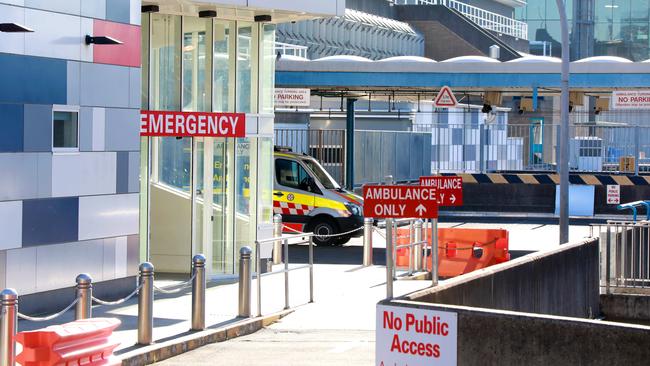Towards a healthier frame
The quality of the nation’s hospital care is under the microscope again.

Hospital performance is again up for debate as authorities seek to determine how best to measure and report on quality in acute care — and what should be the most important indicators for Australia in the future.
Changes in the existing hospital funding agreement, and the lack of political agreement for the 2020-25 funding cycle, have created uncertainty over the best targets and milestones for the sector.
Elective surgery waiting lists, emergency department congestion and patients dropping their private health insurance to rely more on the public sector have put hospitals under more scrutiny and raised the stakes for any reforms.
Following on from the Australian Health Performance Framework released in 2017, the Australian Institute of Health and Welfare has prepared a series of indicators for a concept to be finalised by the end of the year.
The indicators cover determinants of health, health status and health system. The last is the most expansive, with 21 indicators including adverse events, waiting times, weighted costs and net growth in the workforce.
“Note that there are currently no indicators under the dimension of appropriateness,” the AIHW has advised.
“The Australian Commission on Safety and Quality in Health Care is working to develop appropriate indicators for this dimension.” At the request of the Council of Australian Governments Health Council, the commission also is looking to align public and private sector safety and quality measures.
While the AIHW will consult widely on the concept framework, and expects to add more local data to existing state and territory-level data, Australian Healthcare and Hospitals Association chief executive Alison Verhoeven has questioned whether it is bold enough.
Verhoeven says the concept framework is “input-centric” rather than outcomes-focused.
“We need to collect information that measures outcomes of treatments, as reported by patients as well as health professionals,” she says.
“We need to collect information that leads us towards getting better bang for our buck in healthcare — towards the procedures that are of proven good value, to the situations where patients are getting the best outcomes at an affordable cost.
“We need data that shows how often prescription renewals attract a doctor’s fee when it could have been done at less cost and no detriment to the patient as part of, say, a package of ongoing care.
“We need to see the savings and outcomes that occur when using practice nurses to give injections instead of doctors.
“We need to see which treatments are still in use and heavily subsidised by Medicare when more effective evidence-based treatments are available.
“We need information that indicates with more precision where an injury treated in hospital could have been done just as effectively at a local primary care clinic for a fraction of the cost.
“We need information that shows why a particular course of treatment in district X is appreciably more expensive than the same treatment in district Y.”
Federal Health Minister Greg Hunt has put forward a heads of agreement for the next hospital funding cycle that includes the negotiation of reforms to pay for value and outcomes.
However, the Queensland and Victorian governments have yet to sign even the heads of agreement, let alone the final funding agreement, and it remains to be seen what targets, milestones, reforms and performance measures eventuate.
The Independent Hospital Pricing Authority has already taken steps to ensure hospitals are not paid for services that result in the most serious mistakes.
Sentinel events — adverse events that result in serious harm or death to a patient — and hospital-acquired complications are already subject to such a scheme, while avoidable readmissions may be stripped of funding in future.
The commission has guided the work of the IHPA and, in a report released this year, has acknowledged the increasing focus on delivering value-based healthcare for consumers and funders.
“Value-based healthcare is about achieving the best care possible for each patient while maintaining an efficient use of resources,” the commission says.
“The commission and partners have been supporting the achievement of value-based healthcare by fostering system change in five key areas to: focus on people; measure and report on safety and quality; use evidence-based policy and guidance; strengthen clinical governance; (and) embed safety and quality into national systems.”
Updated healthcare standards are being embedded in the system, and the commission is working to improve the reliability of accreditation processes, set national goals to reduce hospital-acquired complications, and support quality improvement through a health learning system for measurement and monitoring of safety and quality.
“Although most healthcare in Australia leads to good outcomes, patients do not always receive the care that is most appropriate for them, and preventable adverse events occur across the Australian health system,” the commission says.
“Lapses in safety and quality, and unwarranted variation in healthcare provided to different populations within Australia, have substantial costs in terms of both the effect on people’s lives and finances.”



To join the conversation, please log in. Don't have an account? Register
Join the conversation, you are commenting as Logout